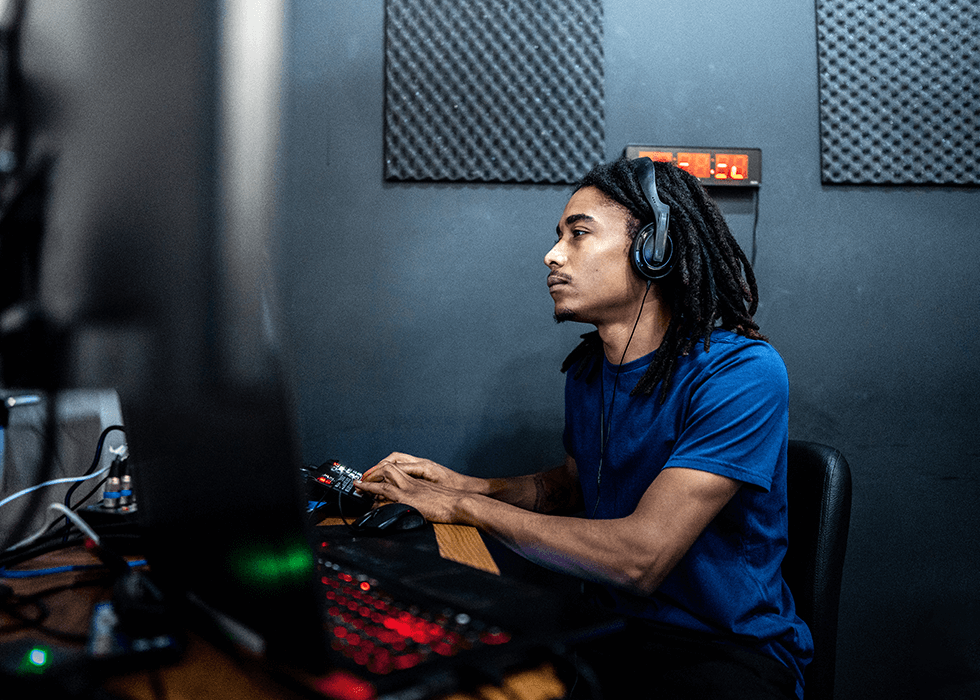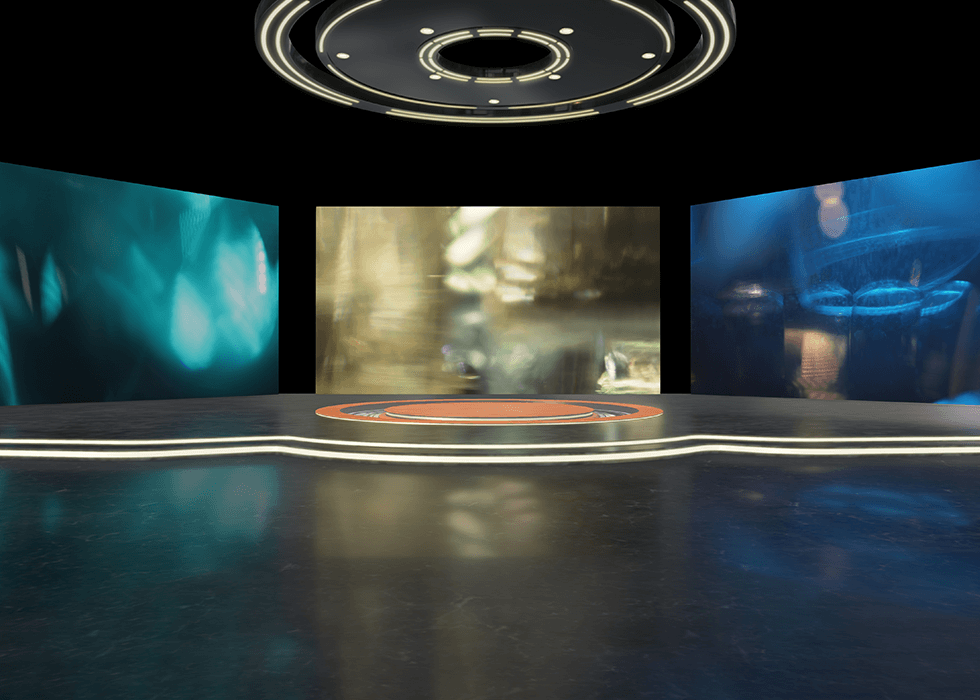News & Trends
Types of Microphones: Choosing the Right Mic for Every Use
There are many types of microphones to choose from these days – audio companies make them for live music, gaming, podcasting, and more. To pick the right mic for the right task, it’s essential to understand the characteristics of them.
The three main types of microphones are dynamic microphones, condenser microphones, and ribbon microphones. While they all have the same core construction, each of them has a different method for converting sound into electrical signals, and various uses. Aside from the big three, there are a few other microphones to be aware of as well.
So, here's a brief list breaking down six of the most popular microphone types, starting with the big three:
Dynamic Microphones
Moving-coil dynamic microphones use an electromagnetic induction principle to convert sound into an electrical signal. They’re durable, versatile, and well-suited to be handheld vocal mics for live sound applications. Dynamic mics aren’t likely to overload or distort when capturing high sound pressure levels (SPL) sources such as guitar amps, drums, and horns. They also have a low sensitivity, requiring louder sources to operate. They’re best used for live performances and loud environments. A bonus is that they have no need for external power.
Dynamic Microphone Examples: Shure SM58 and Sennheiser e835
Condenser Microphones
Condenser microphones, sometimes called “capacitor mics,” particularly in the UK, use electrostatic technology. These mics pull their charge, called “phantom power,” from a mixer or audio interface. Phantom power (usually 48V) is supplied through an XLR cable to maintain its charge. They offer a warm, full sound with good sensitivity and low self-noise.
Condenser mics have the best high-frequency audio reproduction, making them the most common choice for capturing the nuances of voices. Hand percussion and acoustic guitar also benefit from its power. Condenser mics come in two major categories: large-diaphragm and small-diaphragm. Typically, large-diaphragm ones are ideal for studio recording with a warm, rich sound and have multiple polar patterns, while small-diaphragm condenser mics are known for accuracy and detail, often used for instrument recording and live sound.
Condenser Microphone Examples: Neumann U87 and Audio-Technica AT2020
For more information on polar patterns, check out the AVIXA Learns video below!

Ribbon Microphones
Ribbon mics use a thin metal ribbon suspended between magnet poles. These microphones are technically a form of dynamic microphone. However, they’re generally treated as a separate design since they work and sound different than their traditional counterparts. A good ribbon mic offers the most natural sound reproduction as its frequency range most closely mimics human hearing. So, they’re wonderful for vocals and instruments.
Ribbon mics are mostly used inside recording studios as they tend to be more delicate than other types of mics. Some ribbon mics are passive and don’t require external “phantom power,” while active ribbon mics do require it. It’s also important to note that passive ribbon mics can be damaged by phantom power.
Ribbon Microphone Examples: Royer R-121 and AEA R84
USB Microphones
Created with a built-in analog-to-digital converter, these microphones connect directly to computers via USB. Due to this capability, they’re popular for podcasting, home recording, and streaming. If you don’t own an audio interface, you might consider a USB condenser mic for your podcast recording. A bonus is that you can plug the mic straight into a compatible port on your computer without any extra hardware. And luckily, USB microphones generally don’t require an external charge or phantom power in the same way that traditional XLR condenser microphones tend to do, so no external power source is needed.
USB Microphone Examples: Blue Yeti and Audio-Technica ATR2500
Lavalier Microphones
Lavalier mics go by many titles – lapels, body mics, collar mics, or personal mics, just to name a few. They work by converting acoustic energy into electrical energy. These small clip-on mics are typically used in interviews, presentations, or live performances because they’re unobtrusive and discreet. They are usually omnidirectional, but when positioned close to the subject’s mouth, they produce clear sounds without background noise. Wireless lavalier mics normally consist of a transmitter, usually attached to the performer's clothes, and a receiver, which is connected to the audio output. They often do require some form of external power to operate.
Lavalier Microphone Examples: Rode Lavalier GO and Sennheiser ME 2-II
Shotgun Microphones
Created to capture sound from a specific direction with a narrow pickup pattern, you can often see these mics mounted to high-end video cameras. A shotgun mic only picks up sounds directly in front of it and from a distance. Due to their directional pickup pattern and long reach, they’re regularly used in film production, outdoor recording, or broadcast. Shotgun microphones often do require external power, depending on their design.
Shotgun Microphone Examples: Sennheiser MKH 416 and Rode NTG4+
In Closing
Microphones come in various types, each suited to different applications, whether it's live sound, studio recording, broadcasting, or something more specialized. The three primary types of microphones are dynamic, condenser, and ribbon microphones, but there are many others. To pick the proper microphone for the job, it’s important to familiarize yourself with each mic’s characteristics and best uses. Each type has its strengths and weaknesses.
Generally, dynamic mics are best used for live performances or loud environments. Condenser mics are best used for studio recording, vocals, and acoustic instruments. Ribbon mics are also good for studio recording, as well as for capturing high-frequency detail.
Aside from the big three, we’ve discussed a few other microphones – USB, lavalier, and shotgun mics. USB mics are typically utilized for podcasts, home studios, or streaming. Lavaliers are small clip-on mics often utilized in interviews, presentations, or live performances. And finally, shotgun mics are normally used for film production, outdoor recording, or broadcast.
FAQ
Q: Which type of microphone is best for a Q&A presentation?
A: For most Q&A presentations, lavalier microphones or wireless handheld microphones are often the best choices due to their flexibility and ease of use. Lavalier mics are ideal for the presenter, especially if they need to move around, while wireless handheld mics are excellent for audience interaction. Although we didn’t touch on them much in the article, boundary microphones are another option if the setup involves multiple speakers around a table. These are all useful options for conferencing microphones too.
Q: What is a unidirectional microphone?
A: Unidirectional refers to microphones designed to pick up sound predominantly from one direction while rejecting sound from other directions. This directionality reduces unwanted background noise and feedback.
Q: What is a cardioid microphone?
A: Cardioid is the most common unidirectional pattern. A cardioid microphone is a specific type of unidirectional microphone with a heart-shaped pickup pattern. They are designed to capture sound primarily from the front while minimizing sound from the sides and rear.
Q: How many types of microphones are there?
A: There are three primary types of microphones – dynamic microphones, condenser microphones, and ribbon microphones – but various other types and subtypes exist. You can find around 30–40 different microphone types and subtypes from a simple search, but there are additional niche and emerging microphones out there.
Q: What is the most common type of microphone?
A: The most common type of microphone, especially in general use and consumer electronics, is the dynamic microphone. Favored for reliability and versatility, these microphones are found in many settings – from live performances to everyday communication.















